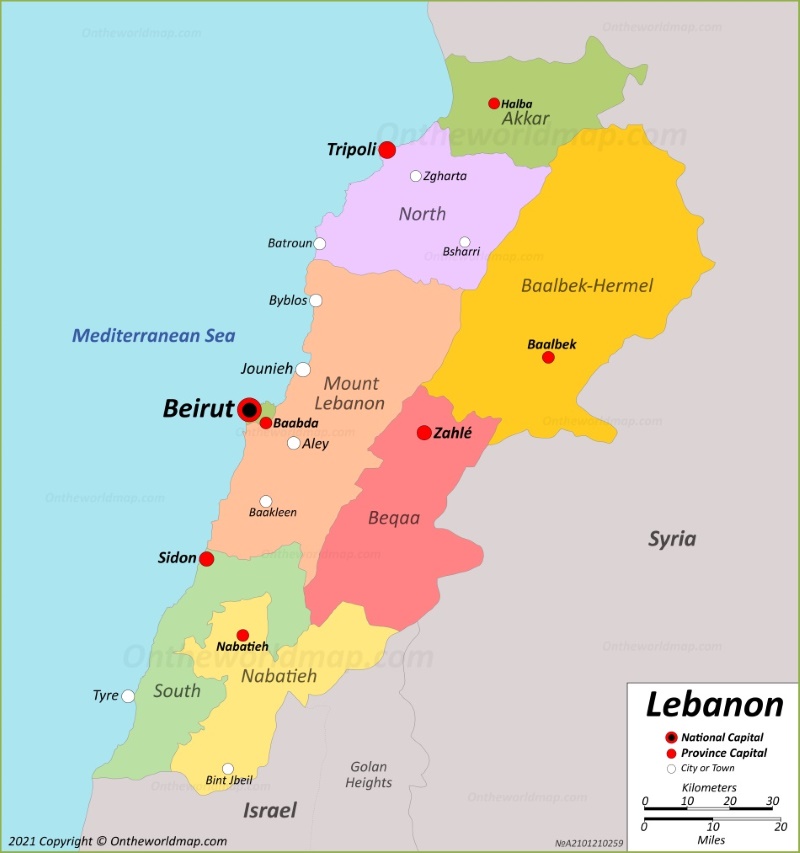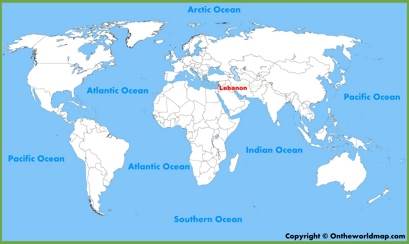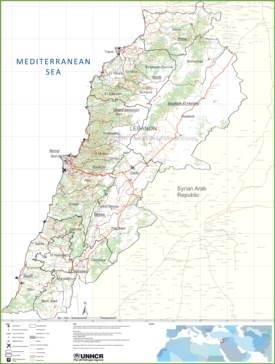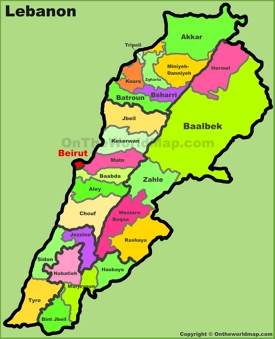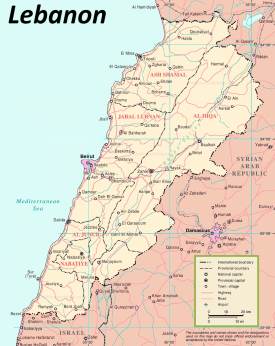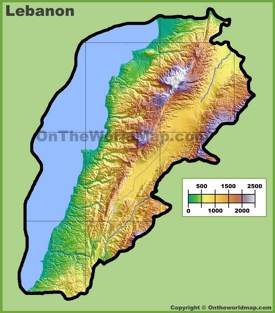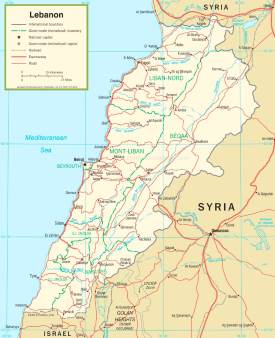Lebanon Map
Description:
This map shows governmental boundaries of countries, national capital, governorates, governorate capital cities, and major cities and towns in Lebanon.
Size: 950x1013px / 142 Kb
Author: Ontheworldmap.com
You may download, print or use the above map for educational, personal and non-commercial purposes. Attribution is required. For any website, blog, scientific research or e-book, you must place a hyperlink (to this page) with an attribution next to the image used.
Online Map of Lebanon
Detailed Maps of Lebanon
About Lebanon
Lebanon, located on the eastern shore of the Mediterranean Sea, borders Syria to the north and east and Israel to the south. The country, known for its diverse religious and cultural communities, covers an area of about 10,452 square kilometers (4,036 sq mi).
Beirut, the capital and largest city, serves as the political, economic, and cultural center. The city, known for its vibrant artistic life and historical significance, plays a central role in Lebanon's economic activity.
Other major cities include Tripoli, Sidon, and Zahle. Tripoli, located in the north, is an important commercial and industrial center. Sidon, a coastal city in the south of the country, has historical significance as one of the ancient Phoenician cities. Zahle, located in the Bekaa Valley, serves as an agricultural center and gateway for the region's wine industry.
Lebanon's economy, characterized by a service-oriented structure, relies heavily on banking, tourism, and trade. The country has faced economic challenges, including political instability and budget deficits, which have affected growth. Despite these challenges, Lebanon maintains a relatively high Human Development Index, reflecting its commitment to education and health.
Tourism plays an important role in Lebanon's economy: tourists are attracted by its historical sites, natural beauty and vibrant urban life. Highlights include the ancient ruins of Baalbek, Jaita Grotto and the historic city of Byblos. The country's capital, Beirut, offers a mix of modern and traditional attractions, including museums, galleries and a bustling nightlife.
Lebanon's strategic location and rich cultural heritage make it uniquely positioned in the Middle East. The country continues to navigate a challenging political and economic environment as it seeks to strengthen its regional and global standing. Despite the challenges, Lebanon remains a country characterized by resilience and diversity, drawing on its rich traditions and dynamic society.
Geography of Lebanon
Lebanon's geography is characterized by a diverse landscape and includes four main regions: the coastal plain, the Lebanese Mountains, the Bekaa Valley and the Antillean Mountains.
The coastal plain, narrow and fertile, stretches along the Mediterranean Sea. The Lebanon Mountains, which run parallel to the coast, reach heights of over 3,000 meters, the highest peak being Kurnat al-Sawda. The Bekaa Valley, located between the Lebanon Mountains and the Antelivan Mountains, serves as the country's main agricultural area. The Antelivan Mountains form the eastern border with Syria.
Lebanon has a Mediterranean climate characterized by hot, dry summers and mild, wet winters on the coast. The mountainous areas experience cooler temperatures and snowfall in winter, resulting in the diversity of the country's climate zones.
Brief History of Lebanon
Lebanon's history reflects a rich fusion of civilizations and cultures. The ancient Phoenicians, famous for maritime trade and the creation of the alphabet, founded key coastal cities such as Byblos, Sidon and Tyre. These cities became influential trading centers of the Mediterranean. Subsequent empires, including the Assyrian, Babylonian, Persian, and Greek empires, consistently controlled the region.
Lebanon flourished during the Roman era, and Baalbek became a prominent religious site. The spread of Christianity in the region marked the Byzantine period, followed by the Islamic caliphates, which brought Islam and Arab culture. The Crusades led to brief European control, followed by Mamluk and Ottoman rule, which lasted until the early 20th century.
Lebanon gained independence from the French Mandate in 1943, creating a unique political system in which power was balanced between religious communities. However, the country faced internal and external challenges, culminating in the 1975-1990 civil war. Post-war reconstruction and political reforms have sought to stabilize the country, but Lebanon continues to face complex regional dynamics and internal challenges.
Maps of Lebanon
Cities of Lebanon

